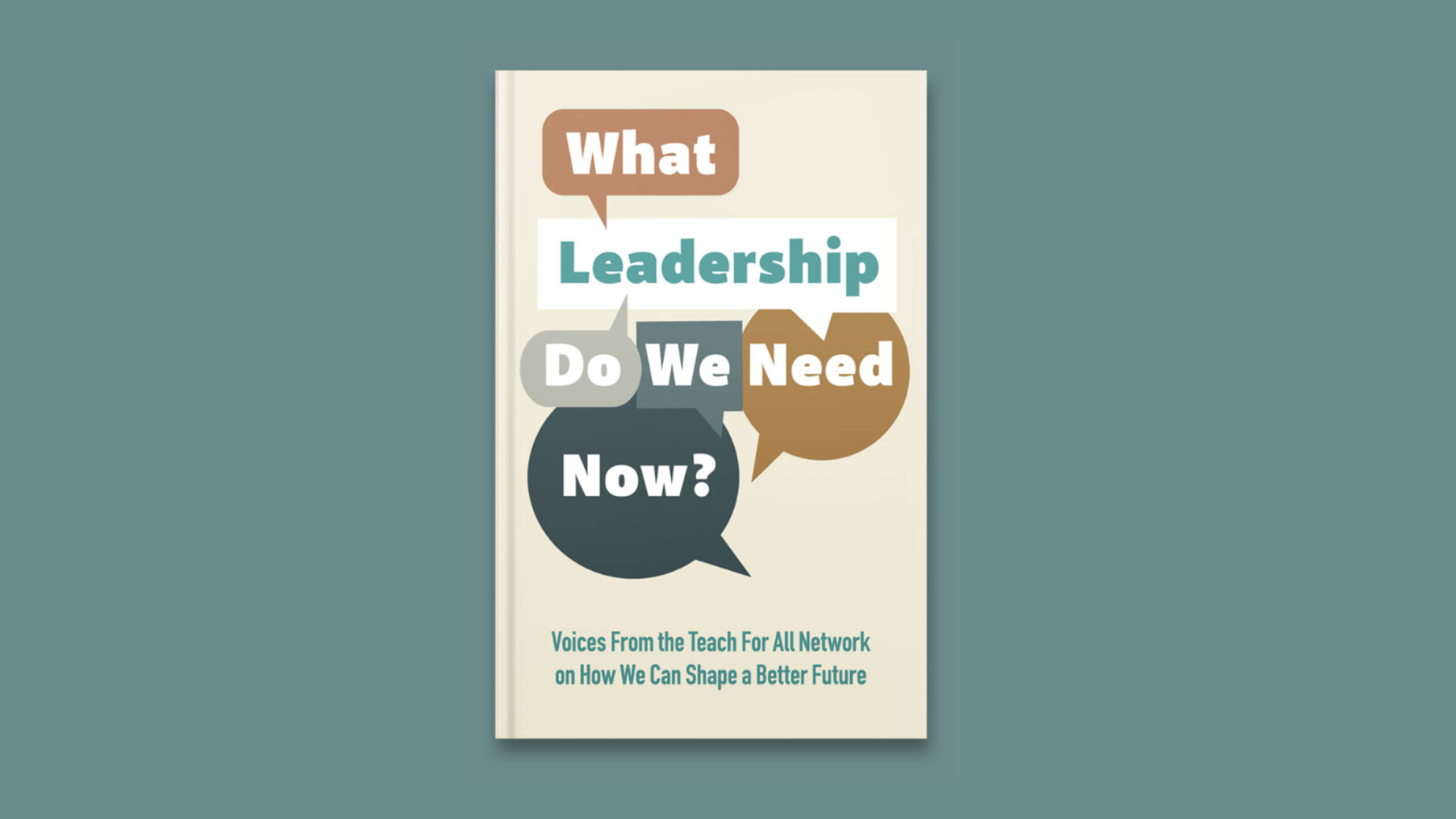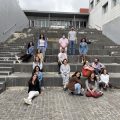
Vozes da rede Teach For All sobre como podemos moldar um futuro melhor
No final do ano passado, milhares de pessoas em toda a rede Teach For All reuniram-se para considerar uma questão oportuna num momento de pós-pandemia e de mudança dramática: De que liderança precisamos agora?
A Teach For All publicou o seu primeiro livro – uma coleção de artigos sobre esse tópico. Esta coleção apresenta perspectivas de mentores, alumni, professores, alunos, e funcionários de 18 países e seis continentes. Coletivamente, esses ensaios exploram o tipo de liderança que precisamos desenvolver nos nossos alunos, professores e em nós mesmos para navegar na incerteza e realizar aspirações partilhadas.
A tutora pedagógica da Teach For Portugal, Natali Martins, escreveu o artigo “When A Flower Doesn’t Bloom”, sobre a importância dos adultos trabalharem na sua própria liderança para criar um ambiente que permita que as crianças se tornem os líderes que queremos que sejam.
When a Flower Doesn’t Bloom
Natali Martins
Adults must work on their own leadership in order to create an environment which enables children to become the leaders we want them to be.
“When a flower doesn’t bloom, you fix the environment in which it grows, not the flower.” This is a saying that often appears in the media, and it invites the reader to shift the way we look at children. When we take care of a flower
and we want it to grow strong and blossom, we arrange the envi- ronment where it grows. We start by getting to know what kind of flower it is and what needs it may have, and we observe our house or garden and the levels of sunlight in different spots to see what the best location may be. We consider how much water it needs and how frequently, and we closely watch the flower grow. We take care of any distress or disease it may show. And we do it differently for every single flower and plant we may have under our responsibility. Since we understand that a tulip does not have the same needs as a rose or a daffodil, we look after each kind of flower independently. In doing so, we establish a connection with that flower (who has never talked to his or her plants?), and its growth and life makes us feel happy and fulfilled in our mission, in addition to creating a more beautiful environment.
We do it for flowers, how are we (not) doing it for children?
Every child is different, and in order for each of them to grow strong, they need adults who take care of them and their environment accordingly. The same way we make adjustments in the environment of a flower, we adults make the adjustments in our homes, classrooms, and communities to create the right environment for each kid.
And at some point, we realize that one of the environment’s key elements is ourselves.
According to Maslow’s pyramid, the theory in psychology of the Hierarchy of Needs, a better environment means a place where children have their basic needs covered: deficiency needs like food, shelter, safety, sense of belonging, and self-esteem, as well as growth needs like cognitive, aesthetic, or self-actualization needs. And this is exactly where adults can make the difference in creating the best possible environment for the children in their care, starting with themselves.
And still, we catch ourselves in our own traps, where we, as parents or teachers, blame children for their behavior and their upbringing. Does it cross our mind to blame the flower for not thriving? Are we not part of the system we are blaming?
This may seem overwhelming, so much responsibility. However, it is much simpler than we first reckon.
We are all human beings, no matter our age. We are growing stronger, and hopefully wiser, every single day as children and adults. If we believe this, it means that adults and children are on a similar path, and they are connected in their own processes of growing and ongoing learning. If this is so, they can learn from each other constantly.
It also means that teachers and children can teach each other what they are going through, what they are becoming, what they love, and what worries them, much more than what they have learnt by heart for a final test in a subject that someone somewhere decided everyone should know. A very well-known Portuguese educator that I personally admire, José Pacheco, writes, “O professor não ensina aquilo que diz, ele transmite aquilo que ele é,” or in English,
“A teacher does not teach what he or she says, he or she passes on what he or she is.”
As parents, we frequently witness the impact of our behavior on our kids. One evening, when I mishandled a saucepan with our dinner and it ended up on the kitchen floor, my baby girl who was looking at me told me in her funny 2-year old voice, “Mamã, não faz mal. Acontece” (“Mum, don’t worry. It happens.”), something that I used to tell her every time she mishandled or broke anything unintentionally. That evening, I realized how much our children replicate what we do: our best and our not-so-good behavior.
I have some less cute stories about that last part too, of course. They remind me that I am part of the environment and so, the quality of the environment I provide my children and students with is my responsibility and can be improved. It is my choice to become a better element of the environment every day.
My point then is that we need to focus on ourselves as adults because in doing so, we are providing a better environment to our children. We need to become better adults around our children—confident, mentally healthy, and passionate about who we are—because this is what we are teaching, intentionally or not.
So, next time we may find ourselves demanding from kids things like “get to know yourself,” “set your goals,” “behave yourself,” “study
hard to become someone,” “speak up,” or “follow your dreams,” we may want to pause, breathe deeply, and check whether we are living in alignment with what we are instructing and if we are listening and sharing enough with our students about our shared experience on Earth.
Because at the very end, we are the environment, and we are the flower.”

